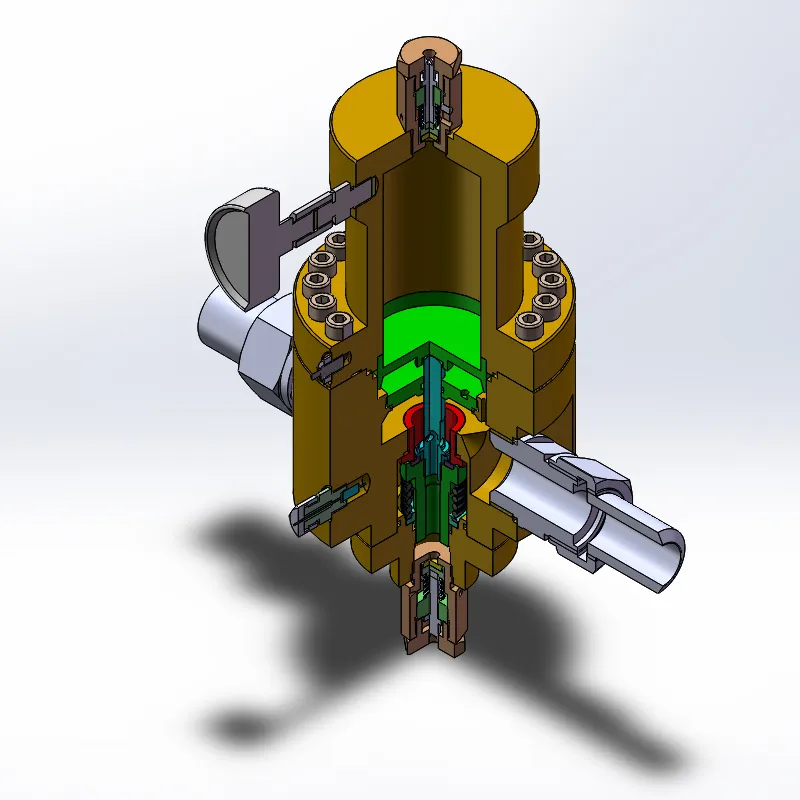
Dec . 19, 2024 19:27
Back to list
gas coalescer filter
Understanding Gas Coalescer Filters A Key Component in Fluid Filtration
In various industries, maintaining the purity and quality of fluids is crucial for operational efficiency and longevity of equipment. One essential technology employed to achieve this is the gas coalescer filter. These filters play a significant role in separating liquids from gases, thereby enhancing the performance of downstream processes and ensuring that equipment operates efficiently.
What is a Gas Coalescer Filter?
A gas coalescer filter is a device designed to remove liquid contaminants from gases. It functions by combining small droplets of liquid into larger droplets, allowing them to be more easily separated from the gas stream. This process of coalescence is critical in preventing corrosion, fouling, and other detrimental effects that liquid contaminants can have on equipment such as compressors and turbines.
Typically, a coalescer filter comprises several stages. The first stage involves the actual filtration, where the gas passes through a medium that captures smaller droplets while allowing the gas to flow through. The second stage uses gravity or physical separation methods to remove the now-larger droplets of liquid that have coalesced.
The Importance of Gas Coalescer Filters
The significance of gas coalescer filters cannot be overstated. In many industrial applications, the presence of liquid contaminants in gas streams can lead to several issues, including
1. Corrosion Liquid contaminants can lead to corrosion in pipelines and equipment, significantly reducing their lifespan and necessitating costly repairs or replacements.
2. Reduced Efficiency When liquid droplets are present in the gas stream, they can interfere with the efficient operation of downstream equipment, resulting in increased energy consumption and reduced overall efficiency.
3. Product Quality In processes where gases are used as reactants or solvents, the presence of liquid contaminants can adversely affect the quality of the final product.
gas coalescer filter

By implementing gas coalescer filters, businesses can mitigate these risks, ensuring cleaner gases, enhanced equipment longevity, and improved overall safety in the workplace.
Applications of Gas Coalescer Filters
Gas coalescer filters are utilized across various industries, including oil and gas, chemical processing, pharmaceuticals, and food processing. In the oil and gas sector, for example, they are vital in gas drying applications. Natural gas extracted from wells often contains water vapor and other liquid hydrocarbons. By coalescing and removing these liquids, operators can transport the gas more efficiently and safely.
In the chemical processing industry, coalescer filters are necessary for removing water and other solvents from reactive gases, ensuring that reactions occur as intended without the interference of unwanted liquids.
Maintenance and Operational Considerations
While gas coalescer filters are designed to be robust and long-lasting, regular maintenance is essential to ensure they operate effectively. This includes
- Monitoring Filter Efficiency Periodically checking the performance of the coalescer filter can help identify when replacement or cleaning is necessary.
- Inspecting for Damage Regular inspections can reveal issues such as physical damage or wear and tear that may affect the filter's performance.
- Changing Filters Depending on the application and the level of contamination, filters should be replaced as per the manufacturer's guidelines to ensure continuous optimal performance.
Conclusion
Gas coalescer filters are a crucial part of maintaining clean gas streams in various industrial applications. By effectively removing liquid contaminants, they help prevent corrosion, reduce energy costs, improve product quality, and enhance safety. As industries continue to emphasize efficiency and safety, the role of gas coalescer filters will only become more vital in ensuring optimal operations and protecting valuable equipment. Investing in high-quality coalescer filters and their proper maintenance will not only safeguard assets but also contribute positively to operational efficiencies and overall productivity.
Next:
Latest news
-
Safety Valve Spring-Loaded Design Overpressure ProtectionNewsJul.25,2025
-
Precision Voltage Regulator AC5 Accuracy Grade PerformanceNewsJul.25,2025
-
Natural Gas Pressure Regulating Skid Industrial Pipeline ApplicationsNewsJul.25,2025
-
Natural Gas Filter Stainless Steel Mesh Element DesignNewsJul.25,2025
-
Gas Pressure Regulator Valve Direct-Acting Spring-Loaded DesignNewsJul.25,2025
-
Decompression Equipment Multi-Stage Heat Exchange System DesignNewsJul.25,2025

